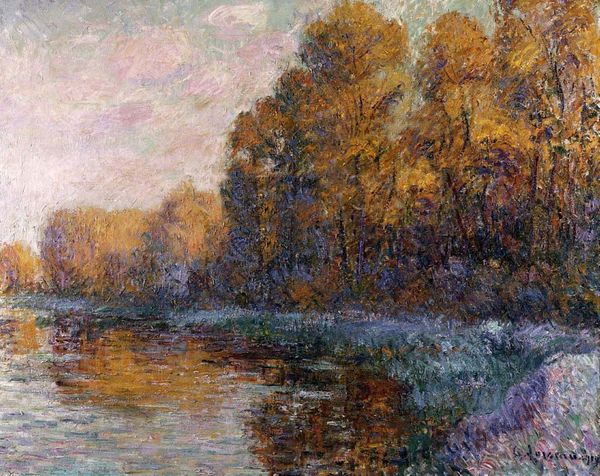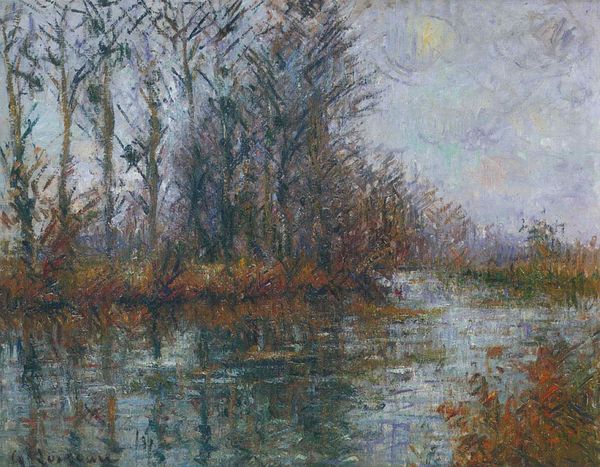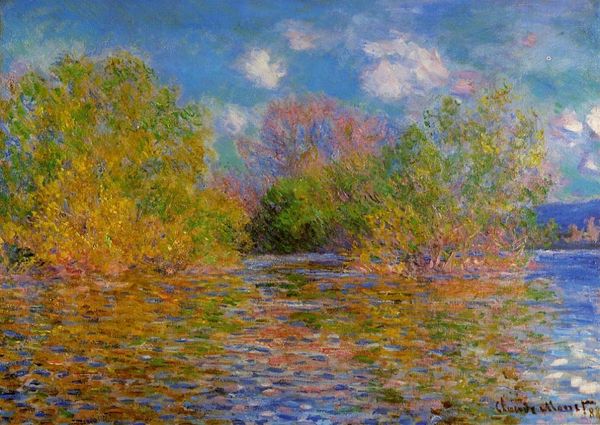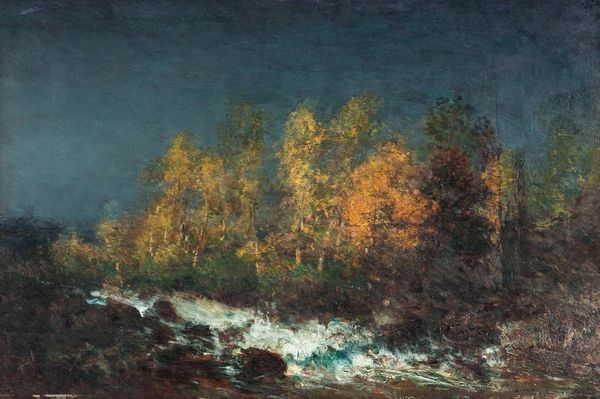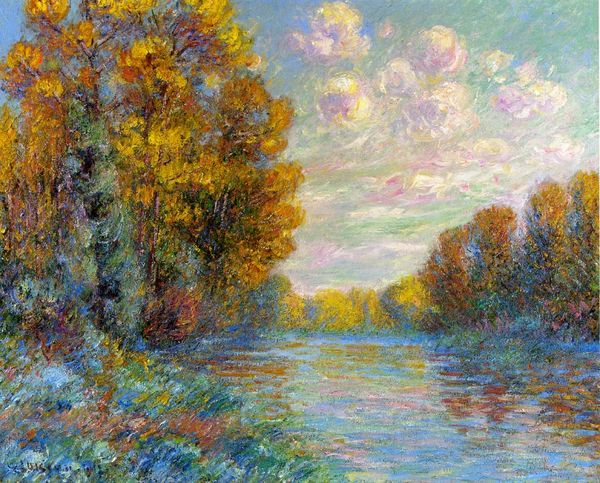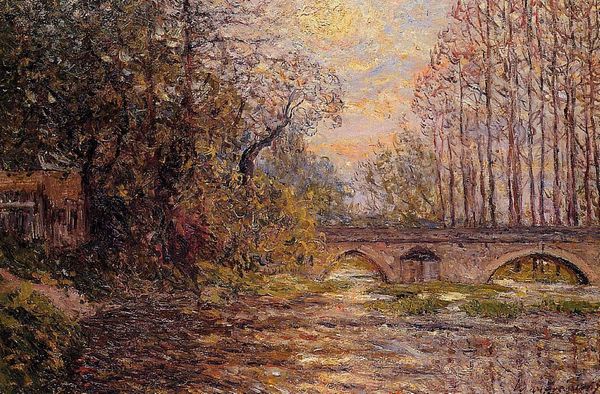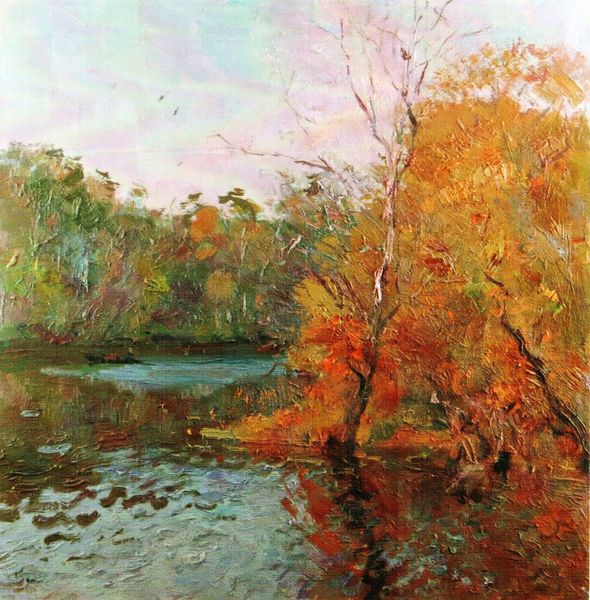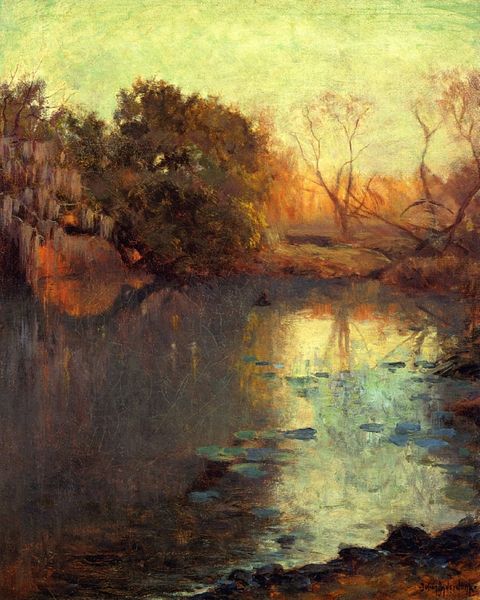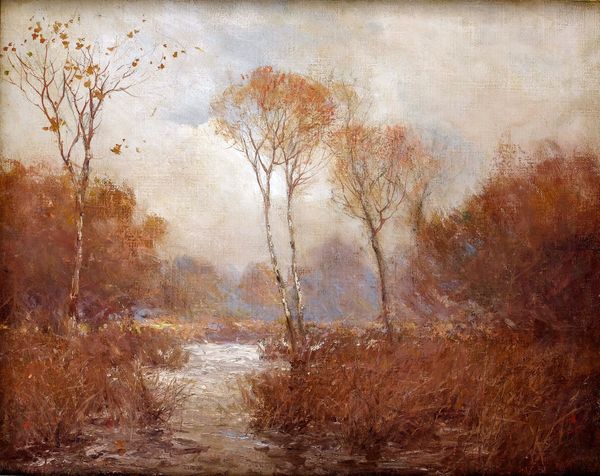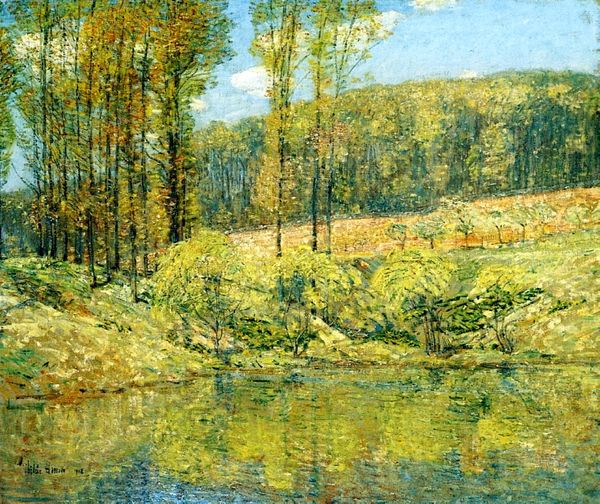
oil-on-canvas
#
abstract expressionism
#
abstract painting
#
mother nature
#
impressionist landscape
#
nature
#
fluid art
#
landscape photography
#
abstract nature shot
#
seascape
#
united-states
#
oil-on-canvas
#
expressionist
Dimensions: 45 1/2 x 45 1/2 in. (115.57 x 115.57 cm) (canvas)52 5/8 x 52 1/4 x 3 1/2 in. (133.67 x 132.72 x 8.89 cm) (outer frame)
Copyright: No Copyright - United States
Editor: So, here we have Philip Little's "The Upper Ipswich River," painted around 1920. It’s an oil on canvas, and right away, I'm struck by how much energy there is in the water – almost vibrates, you know? It makes me wonder, what's your take on it? Curator: Oh, it definitely sings! You know, I find myself drawn into the quiet rebellion within. Little wasn't just painting a river; he was capturing a fleeting emotional state, a little like the stream of consciousness we find in the writing of his contemporaries, don't you think? See how the light sort of dissolves form? What seems solid isn't, everything is in a state of becoming. Does it remind you of something, some sensation? Editor: That's a lovely way of putting it - "fleeting emotional state." It's funny, I was focusing on the motion but now that you mention the dissolving form I can’t unsee it. How did he get away with something like that back then? Curator: Precisely! Think about what else was going on, post World War One. Values were changing, things felt less fixed. So in some ways, he was just following the water; this river mirrors a cultural shift towards subjectivity and impermanence. That the surface of the water and the surrounding nature reflects light with myriad touches. Don't you almost feel as though the water flows into you? Editor: I see what you mean about that cultural shift. All the colours, and reflections…it feels a little bit melancholy now too, almost like a beautiful goodbye. Curator: Exactly! I think he created a beautiful elegy for something just slipping from our grasp, a little magic maybe. So thanks for the swim in the river of contemplation. Editor: And thank you for the history lesson and for changing the way I see the water! I'll definitely think differently about landscapes from now on.
Comments
minneapolisinstituteofart almost 2 years ago
⋮
Born in Swampscott, Massachusetts, Little studied art at the School of the Boston Museum of Fine Arts. Following his studies he married and moved to Salem where he shared his first studio with his close friend and American Impressionist, Frank Benson. Financially independent, Little was able to pursue multiple responsibilities - serving as a civic leader of Salem and a curator of the Essex Institute - while pursuing his passion for painting whenever he had a free moment. Consequently, the landscape of his environs served as a mainstay of his artistic output. The Upper Ipswich River reveals Little as a master of his medium (as witnessed in the variety of brushwork) and an astute colorist. This autumnal scene was exhibited in 1915 at the Panama-Pacific International Exhibition in San Francisco where it received a silver medal.
Join the conversation
Join millions of artists and users on Artera today and experience the ultimate creative platform.


